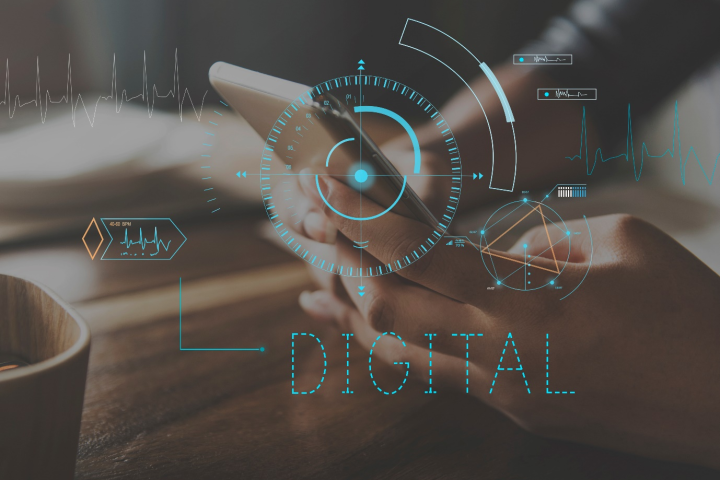In today’s fast-moving digital world, relying only on a firewall is no longer enough. Businesses need a proactive, multi-layered cybersecurity approach that combines advanced technology with employee awareness. By identifying vulnerabilities early and fostering a culture of security, organisations can strengthen defences, reduce risks, and protect both data and reputation.
The Evolving Cyber Threat Landscape
The landscape of cyber threats is always changing, with new challenges appearing and attack methods continually shifting. Notable incidents underscore the importance of staying aware and adapting quickly to mitigate risks.
Emerging Threats Facing Enterprises
Enterprises face evolving threats such as ransomware, which encrypts data and disrupts operations through payment demands. Growing IoT connectivity expands attack surfaces, while supply-chain breaches exploit weaker vendors. Organisations should secure connected devices, vet partners carefully, and maintain strong internal controls to reduce exposure.
Notable Cyber Attacks in Recent Years
Several major cyberattacks have made headlines recently, highlighting critical security weaknesses. The infamous SolarWinds attack, for instance, affected numerous government and corporate networks by infiltrating software updates, showcasing the risks associated with software supply chains.
The Colonial Pipeline ransomware attack disrupted fuel supplies across the East Coast of the United States, demonstrating the real-world impacts that cyberattacks can have on national infrastructure. The attack led to fuel shortages and heightened concerns about the vulnerability of critical infrastructure.
Another significant incident was the breach at a major credit reporting agency, which exposed sensitive personal information of millions. This attack emphasised the importance of safeguarding consumer data and the potential financial repercussions of data breaches. Keeping up with such events can help you identify new vulnerabilities and adjust your cybersecurity tactics accordingly.
Shifting Attacker Tactics and Motivations
Cyber attackers are continually refining their methods. They no longer rely solely on brute force attacks; instead, social engineering is frequently deployed to exploit human weaknesses.
Attackers now focus on gathering intelligence, probing for vulnerabilities, and crafting personalised attacks. Financial gain remains a primary motivation, but some attackers now seek to cause chaos or advance ideological goals.
State-sponsored attacks have increased, with nations targeting each other for espionage. This adds a geopolitical dimension to the threat landscape, requiring enterprises to be cautious of their political environment.
By staying informed about these shifts, you can enhance your strategies and improve your organisation’s resilience against cyber threats.
Building a Resilient Security Architecture
To effectively protect your enterprise, you need a robust framework that incorporates modern security principles. This involves adopting a zero-trust model, implementing network segmentation, managing access deftly, and safeguarding cloud environments.
Zero Trust Security Principles
Zero trust assumes threats are always present, both inside and outside your network. You need to verify every identity and device trying to access resources. This approach minimises vulnerabilities by never implicitly trusting any connection. Implementing continuous monitoring and validation allows only authorised access.
Establish strict identity verification processes. Multi-factor authentication (MFA) should be standard, ensuring that users prove their identity through multiple means. Enforce least privilege access, allowing users access only to what they need for their role. Monitor usage patterns for any anomalies. Regular audits help maintain this rigour.
Network Segmentation and Microsegmentation
Network segmentation divides your network into smaller, isolated segments. Each segment can enforce its security policies. If one segment is compromised, others remain secure. This makes it harder for threats to move laterally within your network.
Microsegmentation takes this further by controlling data flows at a granular level. Policies are applied to individual workloads and devices, minimising attack surfaces. Use firewalls and access controls to restrict traffic between segments. Implementing intrusion detection systems helps monitor and respond to unauthorised access attempts quickly.
Identity and Access Management Best Practices
Identity and Access Management (IAM) protects systems by granting correct access levels. Automated provisioning and de-provisioning streamline onboarding and removal, while role-based controls limit permissions. Regular reviews and multi-factor authentication (MFA) help prevent unauthorised access.
Cloud Security Strategies
Safeguarding your cloud resources requires different tactics than traditional setups. Begin by selecting reputable service providers known for stringent security practices. Pay close attention to shared responsibility models, so you understand both your and your provider’s obligations.
Encrypt data at rest and in transit to protect against breaches. Regularly update and patch cloud services to address vulnerabilities. Use security information and event management (SIEM) tools tailored for cloud environments, offering real-time insights and threat detection. Consider implementing a cloud access security broker (CASB) to enforce security policies across multiple cloud services.
Proactive Defence and Incident Response
In a fast-evolving digital landscape, defending against cyber threats requires active preparedness. Balancing proactive defence measures with effective incident response ensures greater security reliability.
Real-Time Threat Detection
Real-time detection using intrusion systems, behavioural analytics, and automation identifies and mitigates risks before damage occurs. Frequent testing and updates keep these tools effective.
Collaboration with threat intelligence services is beneficial. These services provide insights into emerging threats, helping you stay a step ahead. Implementing a layered security approach ensures no single point of failure. Consistent monitoring and analysis of network traffic are essential components in maintaining robust cybersecurity defences.
Employee Training and Awareness Programs
Human error remains a significant vulnerability. Implementing employee training and awareness programs can minimise risks substantially. These programs should cover password security, phishing threats, and safe internet practices. Interactive sessions and simulation exercises make the learning process more engaging.
Regular updates to training materials reflect evolving threats, keeping your team informed. Encourage a culture of open communication where employees feel safe reporting suspicious activities. Providing clear guidelines on incident reporting enhances response times. By fostering responsibility and vigilance, you build a robust first line of defence against cyber threats.
Regular Security Audits and Assessments
Conducting regular security audits and assessments is vital for identifying vulnerabilities within your systems. These audits provide a comprehensive view of your security posture, highlighting areas needing improvement. Utilising vulnerability scans and penetration tests offers deeper insights into your defences. For businesses seeking expert support, regular scanning for vulnerabilities can be conducted by professionals at Secarma. Understanding their differences is critical; learn more about vulnerability vs penetration testing.
Audits should be scheduled periodically, with findings addressed promptly. They ensure compliance with industry standards and legal requirements, reducing the risk of non-compliance penalties. Documenting these processes provides a clear audit trail and demonstrates due diligence. Active assessment and improvement cultivate a strong security framework, mitigating potential risks effectively.
Future-Proofing Enterprise Cybersecurity
In an ever-evolving digital landscape, it’s vital to incorporate cutting-edge strategies to secure your enterprise. Embracing AI, safeguarding IoT, and staying compliant with data regulations can greatly enhance security postures and prepare businesses for the future.
Embracing Artificial Intelligence and Automation
Artificial Intelligence (AI) and automation are reshaping cybersecurity. By utilising AI, you can instantly detect, prevent, and respond to threats. Machine learning models can analyse vast amounts of data and identify patterns much faster than any human could. Key benefits of AI include real-time threat detection and automated incident response.
Automation reduces human error, maintains consistency, and frees resources by handling routine tasks like updates and vulnerability scans. When combined with AI, it improves efficiency and response times—essential in today’s digital environment.
Securing the Internet of Things (IoT)
Expanding IoT networks increases risk as each device can be targeted. Strong, unique passwords, regular firmware updates and zero-trust controls reduce vulnerabilities. Encrypting transmitted data and monitoring unusual activity further mitigates breach risks.
Regulatory Compliance and Data Privacy
Adhering to data privacy laws is crucial for maintaining trust and avoiding penalties. Regulations like GDPR and CCPA mandate strict data protection measures. Ensuring compliance involves regularly updating your privacy policies, conducting data protection impact assessments, and training staff on data protection practices.
Implementing a comprehensive data protection strategy is essential. Use tools that offer encryption and advanced access controls. Consider seeking certification from recognised bodies to validate your compliance efforts. By prioritising regulatory compliance, you safeguard consumer privacy, build trust, and ensure your enterprise is prepared for evolving security challenges.
Conclusion
Modern cybersecurity requires vigilance, adaptability, and shared responsibility. Through advanced technologies, ongoing assessment, and employee awareness, organisations can remain resilient against evolving threats while protecting their data and reputation.







